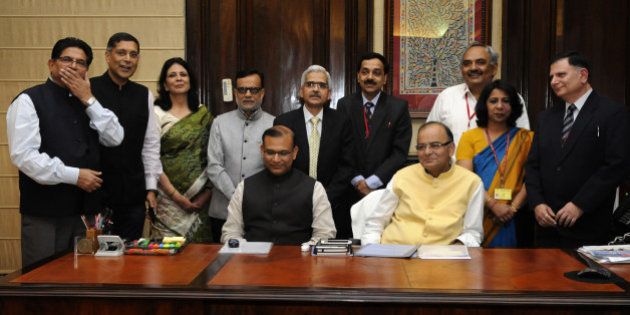
The union budget is the most significant policy announcement of the year for businesses, and citizens of the country. Apart from a summary of the nation's accounts, it is a platform to announce major policy initiatives and regulations that businesses will need to deal with for the next one year until the next budget, usually on the last day of February.
The budget speech is just one part of the budget. The main component is the finance bill, which needs to be passed by both houses of Parliament for budget proposals to come into effect. This is a voluminous document, and preparation starts way in advance of the budget speech: as early as September. And the government goes to great lengths to keep its contents secret, including surveillance by the intelligence bureau on officials of the finance ministry.
Here is how the budget is made:
1. The consultations with states and government departments is a round-the-year process. The preperation of the actual budget document begins usually in September, and by mid-November a shroud of secrecy descends on North Block, where the finance ministry is located. Staff involved in preparation of the budget have no access to the internet from this time until the budget is presented.
2. All ministries send in their expectations and revenue estimates by November. The same month, the finance ministry completes its own assessments and sets ceilings on expenditure to maintain fiscal consolidation. The first full draft of the budget is presented on a blue sheet, one of the most secret financial documents in the entire government system.
3. In February, Halwa, a popular Indian sweet dish, is served to all employees (over a hundred) in the ministry, including the finance minister. It is prepared in a 'kadhai' that is dragged out of the basement. That marks the start of the process of printing voluminous documents of the budget.
4. The budget is printed on two machines in the basement of the ministry. About sixty to seventy officials and staff involved in printing of the budget are practically locked in there until the budget presentation is done. Their stay begins from the time of the halwa ceremony, and any communication they make with family is on the solitary telephone line monitored by the intelligence bureau to make sure there are no leaks.
5. In case one of them falls sick, he is accompanied by an intelligence officer and police guard in hospital. All communication is still monitored.
6. Estimates of tax revenue and estimates of major subsidies are obtained by January, and the ministry discusses demands of industries, and social sectors with concerned stakeholders. The final budget speech is finalized a few days before the presentation of the budget.
7. On budget day, the finance minister first meets the President at Rashtrapati Bhawan and briefs him. Then he goes to Parliament and meets the prime minister and the cabinet, where he provides an overview of the main points. He then accompanies the prime minister to the Lok Sabha for the budget speech.